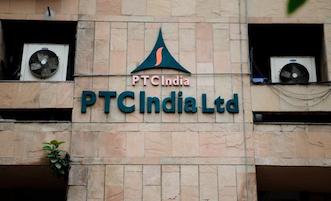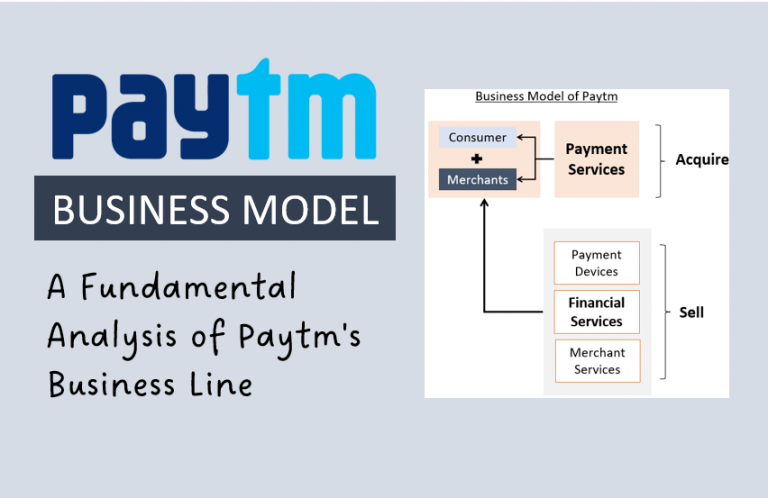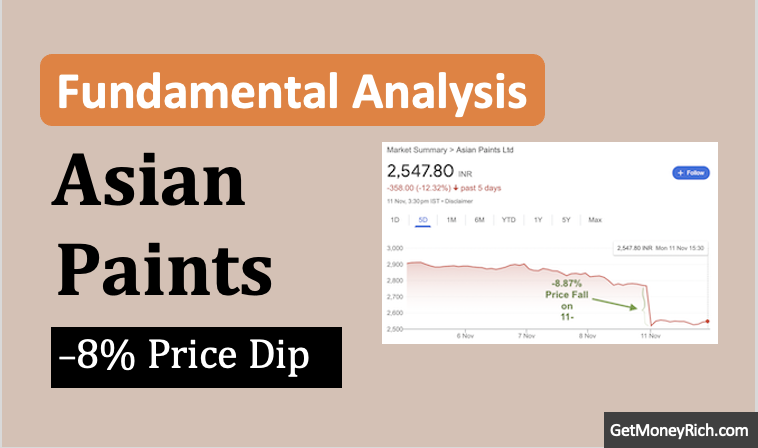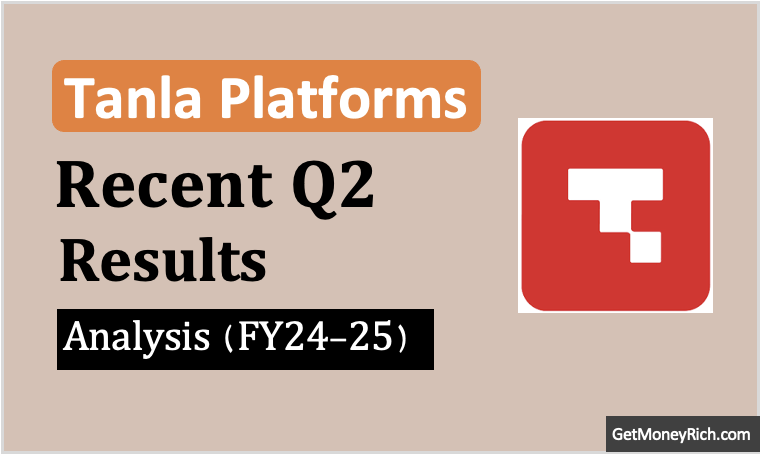On October 25, 2024, investors of IndusInd Bank witnessed an unexpected market event. The bank’s share price crashed by ~18%. This significant drop left many analysts and investors scrambling to understand the underlying causes. Here’s a detailed look into the critical data from IndusInd Bank’s financial results that likely contributed to this sharp decline:
1. Financial Performance
- Net Profit Decline: IndusInd Bank reported a substantial decrease in its net profit. The drop was significant enough to alarm investors, possibly due to higher provisions for bad loans. In Q2 FY25, the bank posted a PAT of Rs.1331.26 crore which is -38.7% lower than the Q1 FY25 quarter. On YoY basis, the PAT has contracted by -39.5%. It reported a PAT of Rs.2170.72 in Q2 FY24.
- Net Interest Income (NII): There was a minor increase in NII by 5% (YoY). In Q2 FY25, the NII is Rs.5,347 as compared to Rs.5,077 in Q2 FY24. It is sure that the growth of only 5% might not have met the market’s expectations. In the past, the bank’s growth have been good.
1.1 Profit Decline – More Than Meets the Eye?
At face value, IndusInd’s net profit drop to Rs.1,331 crore (down 40% YoY) might appear disappointing. However, a closer look reveals that the bank is focusing on fortifying its balance sheet with higher provisions. This increases provisions has impacted net profit figures this quarter.
Without these provisions, adjusted profit would be Rs.1,725 crore, which shows the impact of this deliberate strategy.
For investors, profit decline can never be a positive sign. But this approach, increasing provisions, also signals prudence and long-term vision.
1.2 NIM Compression – Due To Portfolio Rebalancing?
IndusInd’s Net Interest Margin (NIM) narrowed from 4.29% last year to 4.08% in this quarter.
While NIM compression often affects profitability, the bank’s decision to reduce exposure to higher-yielding but riskier micro-finance loans seems to be the primary factor here.
This indicates a strategic rebalancing within the bank’s loan portfolio.
For investors, this move might suggest that the bank is focusing more on risk-adjusted returns rather than immediate yield.
It is a cautious approach which could lead to more sustainable profit growth over time.
2. Asset Quality Issues
The bank’s asset quality seemed to have deteriorated. Both gross and net NPAs have increases in the current Q2 FY25 compares to QoQ and YoY NPAs.
- Gross NPA stands at 2.11% rose from 2.01% QoQ and 1.93% YoY.
- Net NPA is at 0.64% rose from 0.60% QoQ. In Q2 FY 24, the Net NPA was 0.57%
This uptick in NPAs suggests a potential increase in loan defaults or downgrades. It is is a red flag for any banking institution as it impacts profitability through higher provisions.
2.1 Not on Asset Quality
The bank’s Gross NPA (2.11%) and Net NPA (0.64%) has risen but we can still say that it is kind of steady. For sure, no investor would like to see a rising NAP. Hence, this over-reaction in the market for IndusInd Bank’s shares.
3. Provisions and Contingencies
There was a notable rise in provisions as banks must compulsorily increase it if their Gross NPAs are increasing.
This increase of provisions can cause a direct reduction in the net income and hence the EPS (Earnings Per Share).
| Description | Sep ’24 | Jun ’24 | Sep ’23 |
| Provisions And Contingencies (Rs.Cr.) | 1,820.10 | 1,049.84 | 973.81 |
| Gross NPA (%) | 2.11 | 2.02 | 1.93 |
| Net NPA (%) | 0.64 | 0.6 | 0.57 |
| Provisions Increase QoQ (%) | 73.4% | – | – |
| Provisions Increase YoY (%) | 86.9% | – | – |
- As compared to the last quarter (Q1 June’24), the provisions have increased by 73.4%. In Q1, the provisions stood at Rs.1,049.84 crores. A 73% jump in one quarter is alarming.
- As compared to the YoY quarter (Q2 June’23), the provisions have increased by 86.9%. In Q2 last year, the provisions stood at Rs.973.81 crores. A 86.9% rising in provisions is a definite reason for the market to get alarmed.
This increase in provisions is attributed to concerns over loan recoveries (as gross NPA have risen considerably). These provisions act as a precaution against potential future defaults.
It is a signal that points towards caution or emerging issues within the bank’s loan portfolio. Remember, we have seen situations like this with Yes Bank in the past.
3.1 Note About Provisions
Increased provisioning can depress short-term profits. This impact we’ve seen in the IndusInd’s quarterly results. But provisions also have a positive side to it. It also builds a robust buffer to absorb potential future defaults.
Such a provisioning strategy is a strong positive for long-term shareholders. It is refection of the bank’s commitment to maintaining asset quality rather than short-term profit maximization.
This proactive approach could cushion against future credit risks.
4. Deposit Growth as a Strong Liquidity Signal
IndusInd Bank’s deposit base grew 15% year-over-year. It has reached Rs.4.12 trillion, which now surpasses its loan book of Rs.3.57 trillion (13% YoY growth).
For long-term investors, this emphasis on deposit growth over aggressive loan expansion indicates bank’s shift towards securing lower-cost funds to support future lending activities.
CEO Sumant Kathpalia also emphasized the bank’s strategic pivot to grow retail deposits and prioritize secured over unsecured loans. This shift is aligned with broader industry trends favouring more reliable funding and lower-risk loan portfolios.
This approach can help control costs and improve the quality of lending operations as it matures.
5. Market Reaction
The market’s reaction was swift and severe. It is an indicating a lack of confidence in the bank’s ability to manage its risks effectively. The significant stock price drop reflects investor concerns over the sustainability of the bank’s business model or its exposure to high-risk assets.
Why this over-reaction? Yes, but there is a reason for it. As I told, investors have already burnt their fingers with investments like Yes Bank in the past.
Similar banking related past examples like that of DHFL and IL&FS have made investors very defensive towards bank related bad news.
6. Economic and Sectoral Context
There seems to be a broader market nervousness which is amplifying the negative reactions to individual company results. Furthermore, talks about potential market corrections and economic policy uncertainties in India might have further exacerbated the sell-off.
Other major banks like HDFC Bank and ICICI Bank have also experienced declines. But their declines are not as drastic.
Is this a good or bad news for the shareholders of IndusInd Bank?
Surely it is not a good news. But it is also true that income fall and asset quality decline can be a sector-wide concern. Whenever there is such a situation, temporary consolidation followed by gradual recovery is very likely.
7. Future Outlook
Following such results, analysts are quick to revise their price targets downwards. Most of the mutual funds, FIIs, and investment firms cannot digest such negative results. They dump such stocks and allocate the funds elsewhere. They have a pressure to report positive daily returns. Hence, they find solace in dumping than buying value stocks.
So do I consider IndusInd Bank as a value stock? Yes, till now it is a Nifty 50 stock. Considering that it stays there in coming periods, such a massive -18% correction makes it a value buy (for me).
Despite the immediate negative reaction, long-term investors can see value in IndusInd bank.
I’m not predicting a rebound but if the bank addresses the underlying issues (NPA, fast growing provisions, falling PAT & EPS) effectively, the stock price will bounce back.
However, the immediate aftermath is showing a clear loss of investor confidence.
Conclusion
First question first, is it a safe bank?
- The Provision Coverage Ratio (PCR) is held at a high 70%. It reflects the bank’s healthy asset quality and preparedness for defaults.
- The Capital Adequacy Ratio is 16.51%. The Liquidity Coverage Ratio of 118%. These numbers indicate that the bank is well-capitalized to meet regulatory standards. They are ready to withstand liquidity pressures.
- From a long-term investor’s perspective, these ratios indicate the bank’s financial resilience. I think, this bank continues to be a safe investment within the volatile banking sector.
The 18% crash in IndusInd Bank’s share price on October 25, 2025, was a result of several intertwined factors:
- A significant drop in net profit due to higher provisions for bad debts.
- An increase in NPAs, suggesting deteriorating loan quality.
- Broader market sentiment possibly exacerbated by external economic factors and sectoral concerns.
While these factors contributed to the immediate plunge, the long-term perspective for IndusInd Bank will depend on how it navigates these challenges. It must surely manage its asset quality and decrease the provisions if possible.
We as investors might need to watch closely for any strategic shifts or management actions in response to these financial results to gauge future performance.
This event serves as a stark reminder of how sensitive banking stocks can be to changes in financial health and external economic conditions.
Have a happy investing.







thank you for sharing the detailed analysis
Oct 25 2024***